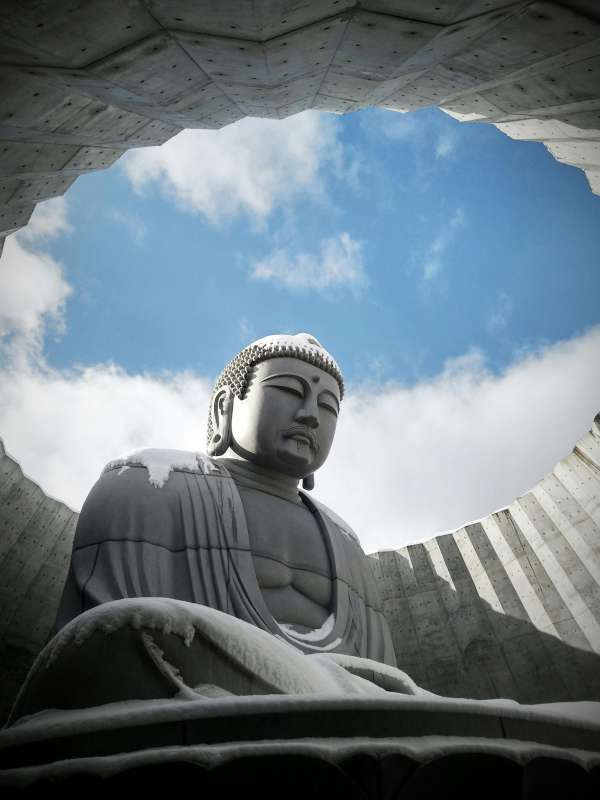R. Martinez Was. He Was Surprised and...
Published on: May 3, 2025
The Unexpected Spark: R. Martinez’s Life Before the Discovery
R. Martinez was not the kind of man who typically drew attention to himself. At 40 years old, he had already built a solid reputation in the world of engineering, but his ambitions stretched far beyond the confines of his office in Madrid. Having grown up in a bustling neighborhood, he was the first in his family to attend university, and his relentless curiosity drove him to pursue a career in energy systems. Martinez was not just an engineer; he was a dreamer. He often spent evenings with his wife and two children, discussing the future of technology and the role he hoped to play in shaping a better world. His love for photography and chess reflected a mind that appreciated both the beauty and complexity of life. Yet, beneath his calm demeanor, there simmered a desire to leave an indelible mark on history.
His work had taken him to several countries, from the wind-swept plains of Denmark to the bustling factories of South Korea. Each experience added to his growing reservoir of knowledge, but none had prepared him for what he was about to uncover. The project that would change everything began in a nondescript laboratory in a foreign city, where he was tasked with improving the efficiency of existing energy systems. It was supposed to be routine, yet fate had different plans.
The Moment of Revelation: A Discovery That Changed Everything
It was late one evening when Martinez, exhausted from a long day of testing, noticed something strange in the data. The readings from a prototype reactor were inconsistent, but not in the way one might expect from a malfunction. Instead, the system appeared to be generating more energy than theoretically possible, and the output was remarkably clean—no toxic byproducts, no emissions, just pure, sustainable power. At first, he assumed there was an error in the sensors. He recalibrated the instruments, repeated the experiment, and watched in disbelief as the results remained consistent. His heart pounded in his chest. Could this really be happening?
He spent the next several days in a state of feverish excitement, barely sleeping as he meticulously documented every step of his process. The breakthrough seemed almost too good to be true. Martinez knew that if his findings held up to scrutiny, they could revolutionize not only his field but the entire world. The implications were staggering: a method of producing clean, abundant energy that could be scaled globally, potentially ending the planet’s dependence on fossil fuels. The significance of his discovery weighed heavily on him, and he realized that he was standing at the precipice of history.
Shockwaves Among Peers: The Reaction of Martinez’s Colleagues
When Martinez finally shared his results with his colleagues, the atmosphere in the laboratory shifted from routine to electric. At first, there was skepticism—engineers and scientists are trained to question extraordinary claims. But as Martinez walked them through the data, demonstrating the repeatability of the results, disbelief gave way to astonishment. One senior scientist, known for his stoic demeanor, was seen shaking his head in disbelief, muttering that he had never witnessed anything like it in his decades-long career. Another colleague, a young physicist from Germany, reportedly exclaimed that this was the kind of discovery that textbooks would be rewritten for.
The news spread quickly through the institution. Within days, Martinez was fielding calls from senior management, international partners, and even government officials. The sense of urgency was palpable. Everyone wanted to know more about this mysterious new method, and rumors began to swirl about its potential applications. Some whispered that it could be the long-awaited answer to the world’s energy crisis, while others speculated about the commercial and geopolitical ramifications. The laboratory, once a place of quiet routine, had become the epicenter of a scientific storm.
The Method: How Clean Energy Was Made Possible
What exactly had Martinez discovered? The details, at first, were closely guarded, but certain facts began to emerge. The method involved a novel process of catalyzing a reaction between common, non-toxic materials at room temperature, resulting in the release of large amounts of energy with no harmful emissions. Unlike traditional combustion or even nuclear fission, the process did not rely on rare or dangerous elements. Instead, it utilized a combination of widely available compounds and a proprietary catalyst that Martinez had developed after years of experimentation.
One of the most shocking aspects of the discovery was its simplicity. The apparatus required to initiate the reaction could be constructed using off-the-shelf components, making it accessible to even small-scale operators. Early tests suggested that the energy output could be scaled linearly, meaning that both individual households and massive industrial facilities could benefit from the technology. The potential for decentralized, democratized energy production was unprecedented.
Martinez was acutely aware of the risks involved in such a disruptive innovation. He immediately began working with legal and security experts to patent his process and protect it from corporate espionage. At the same time, he reached out to trusted scientists around the world, inviting them to independently verify his results. The stakes were simply too high to allow for mistakes or miscommunication.
The Personal Toll: How the Discovery Changed Martinez’s Life
The days following the revelation were a whirlwind for Martinez and his family. Media outlets began to pick up on the story, and journalists camped outside his home in Madrid, hoping for a quote or an exclusive interview. Martinez’s wife, a schoolteacher, found herself at the center of unwanted attention, while their two children struggled to understand why their father was suddenly a household name. The family’s quiet life was turned upside down almost overnight.
Martinez himself was both exhilarated and overwhelmed. He received invitations to speak at international conferences, offers from major corporations, and even overtures from government agencies interested in adapting his technology for national infrastructure. With each new development, the pressure mounted. Martinez was forced to navigate a complex web of interests, each vying for a piece of the discovery. He hired a team of advisors to help manage the chaos, but the sheer scale of the attention was unlike anything he had ever experienced.
Despite the challenges, Martinez remained steadfast in his commitment to transparency and scientific integrity. He refused to sell his patent to the highest bidder, insisting that the technology should be used for the greater good. This decision earned him both admiration and criticism. Some accused him of naivety, while others hailed him as a visionary. The debate played out in the media, with pundits and politicians weighing in on the implications of Martinez’s stance.
Scientific Scrutiny: The Global Response
As word of the discovery spread, scientific institutions around the world mobilized to replicate Martinez’s results. Laboratories in the United States, Japan, and Germany reported similar findings, confirming the validity of the method. Peer-reviewed journals published detailed analyses, and the consensus was clear: the process worked. The shockwaves reverberated through the scientific community, prompting urgent discussions about how to integrate the technology into existing energy systems.
Not everyone was pleased. Established energy companies, facing the prospect of obsolescence, began to push back. Lobbyists argued that the new method was unproven or potentially dangerous, despite mounting evidence to the contrary. In some countries, regulatory agencies launched investigations, citing concerns about safety and environmental impact. Martinez found himself at the center of a global debate, with powerful interests on all sides.
Yet, the momentum was unstoppable. Environmental organizations hailed the discovery as a game-changer, and grassroots movements sprang up to demand rapid adoption of the technology. In cities from Madrid to Mumbai, activists organized rallies and petitioned governments to embrace the new method. The sense of urgency was heightened by mounting evidence of climate change and the growing toll of pollution on public health.
The Human Cost: Threats, Paranoia, and Unexpected Dangers
As the stakes grew higher, so did the risks. Martinez began receiving anonymous threats—emails warning him to abandon his research, phone calls in the dead of night. His family was placed under police protection after a suspicious vehicle was spotted outside their home. The engineer who had once dreamed of changing the world now found himself looking over his shoulder, wondering who he could trust.
The paranoia was not unfounded. History is replete with examples of inventors and scientists who faced dire consequences for their breakthroughs. Martinez’s advisors urged him to take precautions, and he reluctantly agreed to limit his public appearances. At the same time, he refused to be intimidated. In a televised interview, he declared that no amount of pressure would deter him from his mission to make clean energy available to all.
Behind the scenes, law enforcement agencies worked to track down the sources of the threats. Investigations revealed a complex web of interests, including rival inventors, disgruntled former colleagues, and even operatives linked to international corporations. The revelation sent shockwaves through the scientific community, highlighting the darker side of innovation and the lengths to which some would go to protect their interests.
The Global Impact: Early Adoption and Unintended Consequences
As pilot projects began to roll out in various countries, the world watched with bated breath. In Spain, a consortium of public and private partners launched the first commercial-scale installation, providing clean energy to thousands of homes. The results were nothing short of spectacular: energy costs plummeted, air quality improved, and local economies flourished. Similar projects followed in other countries, each adapting the technology to local conditions.
Yet, not all consequences were positive. The rapid adoption of Martinez’s method disrupted established industries, leading to widespread job losses in traditional energy sectors. In some regions, protests erupted as workers demanded support for retraining and economic transition. Governments scrambled to implement policies to manage the upheaval, but the pace of change outstripped their ability to respond. The world was forced to confront the reality that even the most beneficial innovations can have unintended side effects.
At the same time, new opportunities emerged. Entrepreneurs launched startups focused on refining and expanding the technology, while researchers explored its potential applications in transportation, manufacturing, and agriculture. The global race to harness the power of Martinez’s discovery was on, and the pace of innovation accelerated to unprecedented levels.
Martinez’s Legacy: Fame, Fortune, and the Weight of Responsibility
With fame came fortune. Martinez’s patent portfolio was valued in the billions, and he found himself courted by world leaders and industry titans. Yet, he remained grounded, insisting that the true value of his work lay in its potential to improve lives. He donated a significant portion of his earnings to educational and environmental causes, funding scholarships for young engineers and supporting initiatives to bring clean energy to underserved communities.
Despite his newfound wealth, Martinez struggled with the weight of responsibility. He was acutely aware that his discovery had the power to shape the future of humanity, for better or worse. In private moments, he confided to friends that he worried about the long-term consequences of his work. Would the world use this gift wisely, or would it fall victim to the same patterns of greed and short-sightedness that had plagued previous technological revolutions?
Martinez’s story became the subject of documentaries, biographies, and even a feature film. He was hailed as a hero in some circles and vilified in others. The debate over his legacy raged on, but one fact was indisputable: the world would never be the same again.
The Ongoing Battle: Innovation Versus the Status Quo
The struggle to implement Martinez’s technology continues to this day. In some countries, vested interests have succeeded in delaying or even blocking adoption, citing concerns about economic disruption and national security. In others, the transition has been swift and decisive, with governments embracing the new method as a cornerstone of their energy policy.
The battle lines are drawn not only in boardrooms and legislative chambers but also in the hearts and minds of ordinary people. For every skeptic who questions the wisdom of upending established systems, there is an optimist who sees the potential for a brighter, cleaner future. The debate is fierce, and the outcome remains uncertain.
Martinez himself continues to advocate for responsible innovation. He travels the world, meeting with policymakers, entrepreneurs, and activists, urging them to prioritize the common good over short-term gain. His message is clear: the power to change the world lies not in technology alone, but in the choices we make as a society.
Looking Forward: The Next Chapter
As the world grapples with the implications of Martinez’s discovery, one thing is certain: the genie cannot be put back in the bottle. The clean energy revolution is underway, and its effects will be felt for generations to come. Whether the world rises to the challenge or succumbs to the pressures of the past remains to be seen. But thanks to the vision and courage of one man from Madrid, the possibility of a sustainable future is no longer a distant dream, but a tangible reality.










